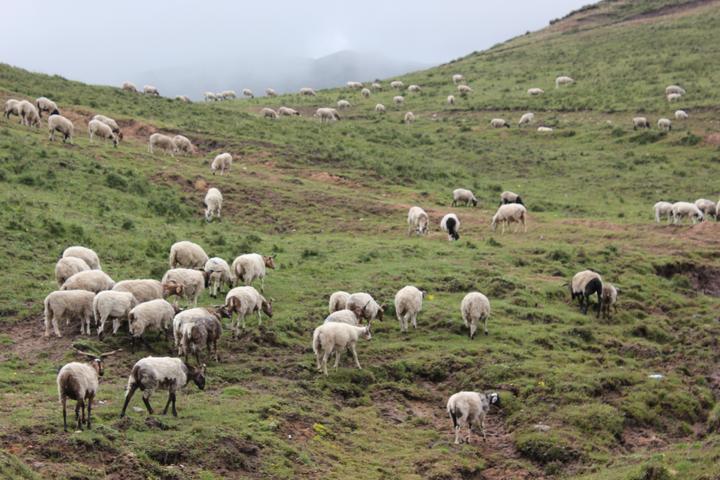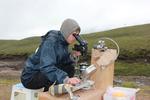Vegetation-based climate reconstruction for the Tibetan Plateau
Integrating vegetation modelling and pollen data reanalyses
 Land use on the Tibetan Plateau by grazing sheep
Land use on the Tibetan Plateau by grazing sheep
The Asian monsoonal system controls the vegetation over a large area of Eurasia. The environmental properties over the Tibetan Plateau in turn affect the monsoon system. Within the proposed projected we will study the millennial-scale climate changes and human-climatevegetation interactions on the Tibetan Plateau during the glacial times to Holocene. It is a key task of our project to set up a Tibetan Plateau regional vegetation model that will be used for inverse vegetation modelling of palaeoclimate based on pollen-inferred vegetation changes. Results will be compared to climate estimates that were quantified by the application of traditional pollen-climate transfer functions. Obtained climatic pattern in space and time will contribute to our understanding of causes and consequences of past climate change on the Tibetan Plateau. Furthermore, we will investigate how severe the linkage chain “climate-vegetationpollen” is disturbed by human impact and will considered that in the numerical climate inference approaches. Findings from this project will significantly contribute to the understanding of the “Late Cenozoic climate evolution and environmental response” and the “Phase of human impact and Global Change”, which are two major points of the priority program “TiP”.
